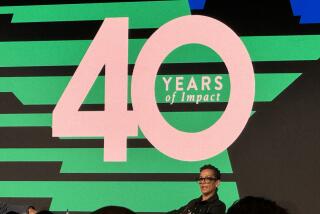Give Youngsters a Chance and a Reason to Be Fit
- Share via
Two state legislative committees that met recently in Los Angeles explored the fitness of our youth, an issue that is important to all of us, yet so often misunderstood or ignored. The larger concern, however, should be education through sport.
Physical fitness is usually defined in terms of how one performs on a test. Yet, youngsters often are not interested in such tests.
It’s no wonder. The trouble with physical fitness regimens is that they’re one-dimensional and, often, dull. Exercising for fitness lacks sport’s multiple dimensions. It may be impossible to get a generation of couch potatoes interested in fitness, but sport offers a variety of challenging experiences that can enrich the lives of young people.
I am not objecting to physical fitness programs, but it is important to recognize that sport is very different from exercise.
How interesting can it be for a youngster to see how many sit-ups, push-ups or chin-ups she can do? These activities can be interesting if there is a purpose. Sports provide a purpose. It’s far more likely that a youngster will be interested in being able to do push-ups if it will make it possible for her to do a better job on the volleyball team. A youngster understands that skills are built upon skills when one has the opportunity to take part in sport.
Sport is unique to the human species. Other animals, like humans, engage in play. Other animals, like humans, engage in setting aside and protecting their territory. But only the human species take part in sport. We are the only ones on Earth who set up barriers and try to jump over them and to see who can get to the finish line first. We are the only ones who race across water in boats.
Sport is uniquely human, and sport provides an opportunity for individuals to set their own goals and accomplish those goals, whether it’s to run a mile in seven minutes or to jump six feet. It allows a person to take on a personal challenge and to succeed personally. Sport is our birthright.
That birthright is too often misunderstood by adults, in particular, who get caught up in the end result--winning or losing. But it is the other elements of sport that are most valuable: The process of teaching people the skills of the sport, the process of learning new skills and the process of competition, during which individual judgment is developed. Teaching, learning and competition are the tender loving care of sport.
Millions of our young people are being denied the opportunity to learn through sport. Sports opportunities are especially scarce for girls. But for both boys and girls in a country identified with abundance, the sports menu is woefully limited. At the age when children are most able to learn, we give them the least opportunity. Children from the ages of 7 to 14 are expected to try out for a team, compete a week later and six weeks later see the season come to an end. For those who don’t make the team, the season is over before it begins.
Children in America are fed a diet of fast-food sports. When it comes to sport, our children are undernourished to the point of starvation.
It is ironic that in the very same region where the Los Angeles Olympic Games were embraced so warmly and enthusiastically in 1932 and again in 1984, opportunity for participation in high-quality sports programs has been severely limited for years. Schools in Los Angeles and other cities often provide limited sports training, or none at all.
The development of our youth, through sport, is essential to the long-term health of our communities. Sport provides an environment for learning. It gives communities a focal point for caring about the growth and development of our children. To be successful in making sport available to all, we must work at every level, from the family and the neighborhood to government entities and the governing bodies of sport.
If we are truly serious about improving the fitness of our youngsters, we must be creative. We must give them a reason to be fit, to come off the couches and to become active in a meaningful way. We must lead young people to an arena where sports can cause fitness--and learning--to become fun.


